I am tinkering with an Arduino and recently had to convert 8V AC to 5V DC in order to run it.
The project is a custom doorbell, which gets the power from the doorbell transformer (transformer is located in the basement).
The doorbell transformer is a 220V AC to 8V AC transformer.
Since it is 8V AC, I needed to make it to 8V DC. So I soldered a bridge rectifier and put a compensating capacitor to smooth the output (see supplying image).
This 8V DC output is an input of a DC-DC step-down module, which is based on a LM2596 power regulator. It delivers 5V DC and supplies the Arduino and a module, which is responsible for the bell sound. This module can drive up to 3W speaker.
The speaker connected to it is 2W 8 Ohm.
Unfortunately the bridge rectifier and e-cap are getting very hot even in the idle state (e.g. at night, no doorbell button pressed).
What am I missing in my circuit in order to get proper 8V DC for the step-down module and keep the bridge rectifier at the normal temperature?
29.07.2019 EDIT Transformer is located in the basement and cannot heat up the bridge. It gets hot on it's own.
23.09.2019 EDIT So I have found a probable root of that issue. I have not checked, if there is any current on the doorbell button. Both existing doorbell buttons are connected to the 8V AC line, causing lot of trouble when connected to the Ground and to a digital input on arduino (red arrow).
For the workaround see my answer below.



